Move to Contact – Flames of War fun
 By Tom Gall
By Tom Gall
The folks at Hard Knox Games in Elizabethtown Ky are on to something for Flames of War and you probably want to know about it. With Flames of War (FOW) (and TY) I’m sure you’re more than familiar with the current matrix of missions that dot the competitive and casual landscape.
Part of the fun of FOW is showing up with a list, and not knowing what mission you’re going to play. You and your opponent each pick a stance (Attack, Maneuver, or Defend), reveal which gets you to a table to roll a D6, and decide the mission to play. The mission of course determines where you place objectives, where you deploy your forces, if you have reinforcements and other situational rules that’ll give your game extra flavor.
It’s a great system and thankfully Battlefront has been refreshing it approximately yearly. Sometimes tho, you want a little more variety. This is where the Move to Contact format you’ll find is interesting!
The folks at Hard Knox have run this format of missions 5 times now. Locally we’ve been using the missions for casual play, we’re fans.
What’s so different?
First, these missions play with a dramatically smaller point level. Something in the range of 30ish points is what we’ve been using. You still have to build a legal list which pins down your choices remarkably! A minimal legal list is comprised of a formation HQ, plus the black box platoons that go with that formation.
For these missions, it’s wise to include some restrictions on armor, such as nothing greater than a 6 side armor for LW and for MW we’ve been playing with a limitation of nothing greater than 5 side armor. This keeps the mega tanks off the table and the unbalance they bring.
Second, the table size, each one of the missions is played on a 4’x4′ table. Given that you’re more than likely fielding plenty of infantry that smaller table size means you don’t have as much area to defend or as far to go to get to the objective(s).
Third, all missions have Deep Reserves either immediate or delayed. At this point level, you’ll likely only have about 18-20 points on table with the rest in reserve. Not getting to start with all your toys limited by the Deep reserve rules, which is only 1 armor or aircraft unit will present you with a choice of what you want to play with early game vs late game. As many of the missions need you to move quickly to the objective, tanks can seem like a great choice, OTOH if the objective is inside a building, tanks might not be all that useful since they can’t assault into a building.
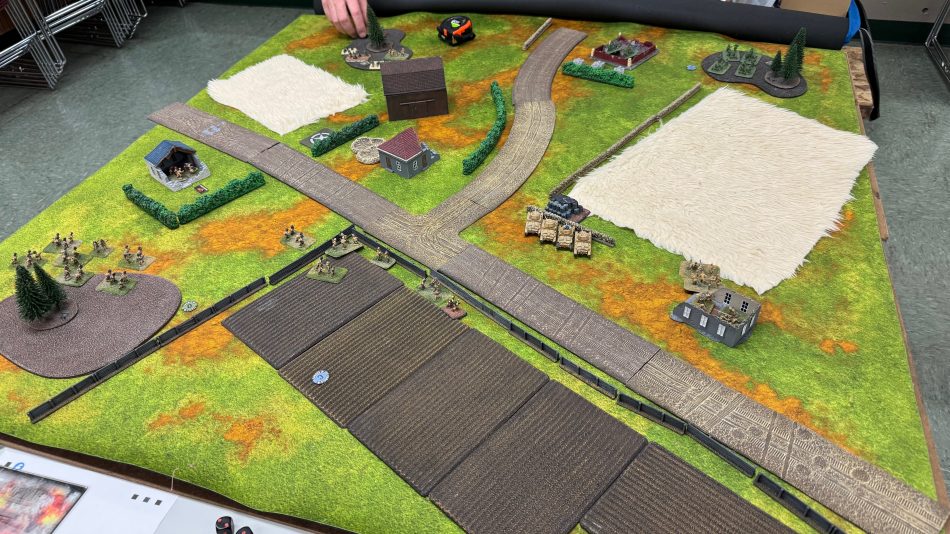
Fourth all missions you’re rolling to see who the attacker and defender is as well as rolling to see who will go first. On the smaller table and with reserves, these rolls are all the more important.
Fifth, the first unit lost is no longer free for the purposes of points, so if you are able to knock out a unit, you’ve gotten yourself a point. While the table is smaller, and the size of your force is smaller, but the system for scoring points is otherwise unchanged.
Sixth, the rounds are shorter, approximately 70 minutes, which for a tournament means you can play five rounds in a day. More games equals more fun! In most of the missions, the objectives aren’t live til turn six so you’ll still need to keep the game moving along. Yet with the smaller point total, it’s less lead to push.
Add it up and you’ve a great mixture for inserting some fun into your Flames of War games no matter of they’re casual or a tournament.
The Missions
There are currently 5 missions that Hard Knox games have published with their Move to Contact events. We’ve been playing these locally and enjoying them thoroughly. A few thoughts, we let the player that selects their board edge to choose any of the four, it’s a 4′ x 4′ after all!
In some of the missions, the placement of objectives is after deployment, in these missions, we expressly do not allow spearheading since it’s unknown where the objective will be.
All missions are meeting engagements. All missions have deep reserves.
All missions require you to play to at least turn 6. Getting to, seizing, and keeping the objective(s) is very important. If you’re the second player, remember the first player will be checking for victory conditions first on turn 6, which often means the second player will need to pay close attention to making sure the objectives are contested so that the game isn’t lost. Remember to contest and objective means you have a team within 4″ of the objective. If a player starts a turn within 4″ of an objective and ends their turn within 4″ of an objective and no enemy teams are within 4″, they will.
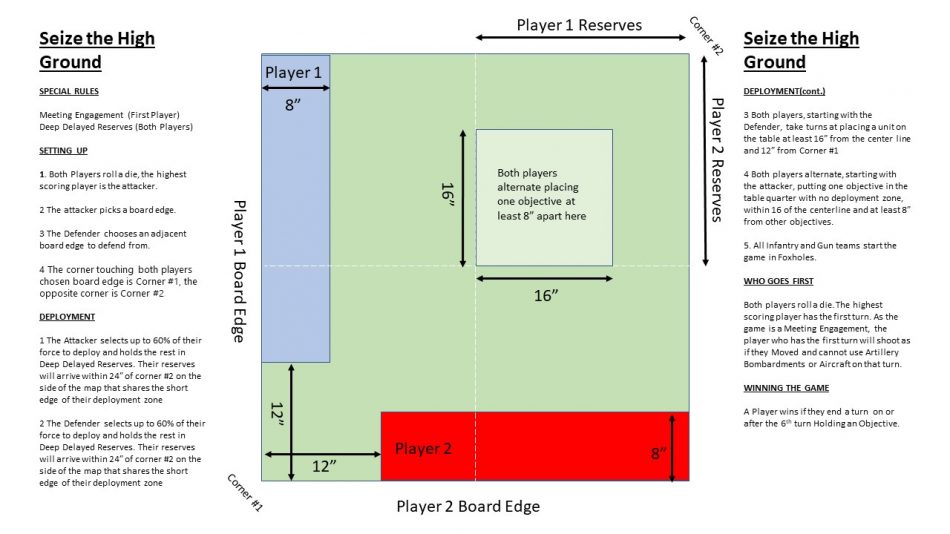
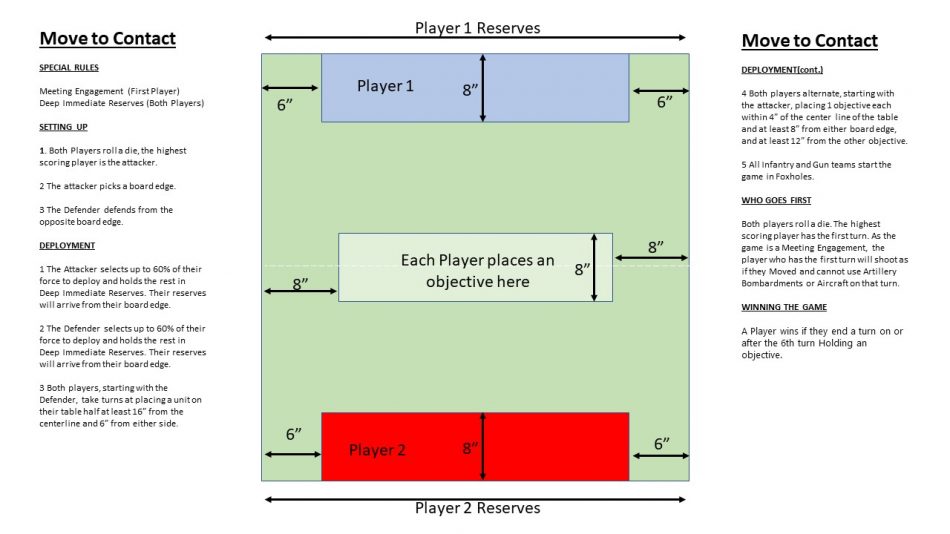
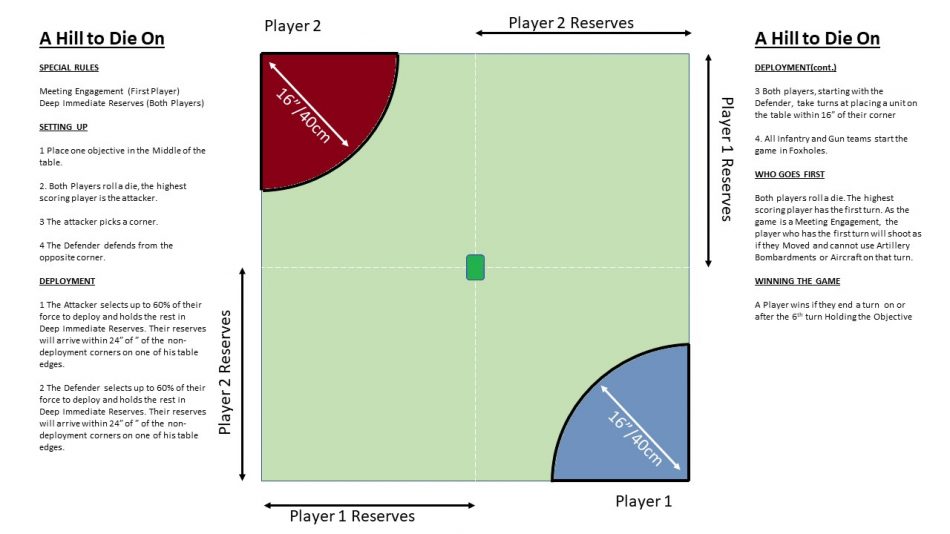
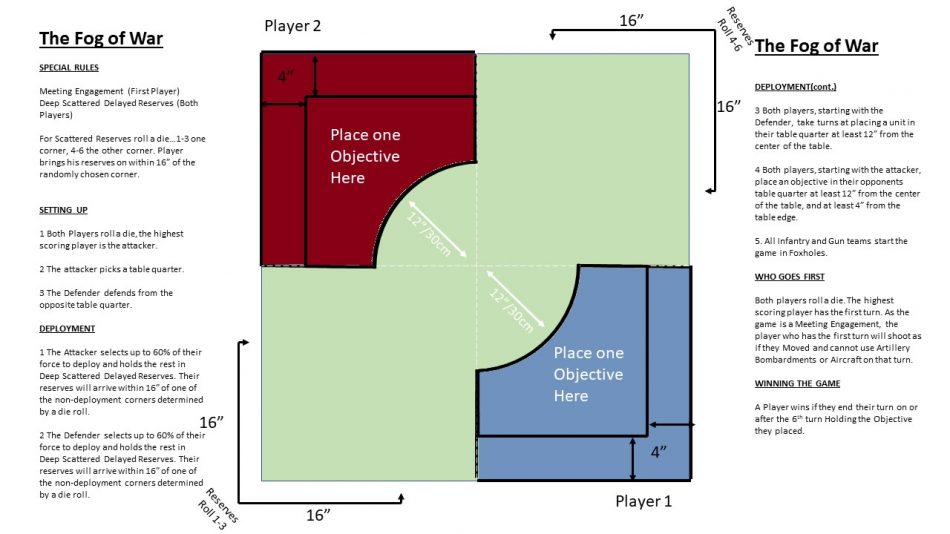
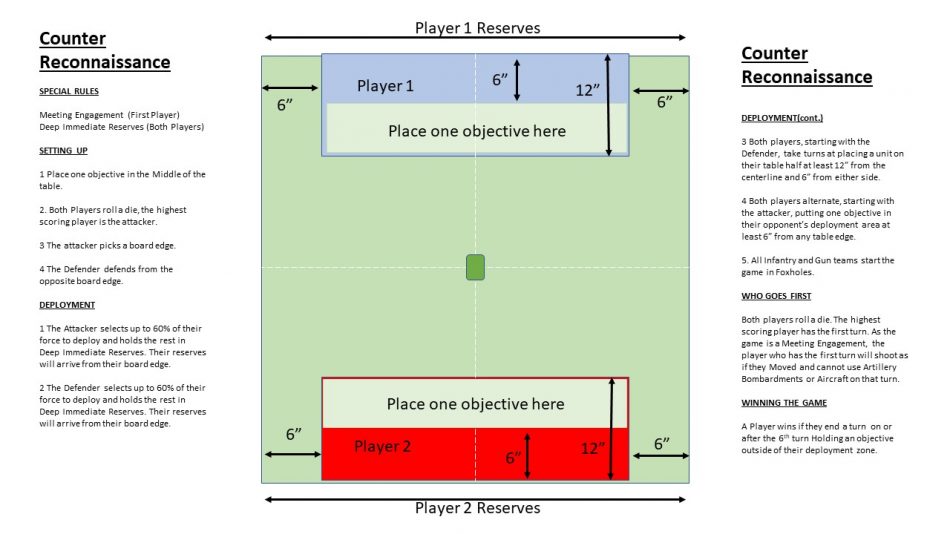
WWIII: Team Yankee
I’ve not personally tested these missions with Team Yankee. In theory, the modern era could fit well with these missions. Given that anti-tank hardware is more prevalent in the average modern force, the limitation on armor is probably not needed, however, this is untested.
The smaller table size however does impact those weapon systems that have a minimum range, 8″ or 16″ of activation distance can be a factor.
Helicopters and strike aircraft on a smaller table could also be a concern given at a lower point level the ability to afford AA system is impacted. You might consider some limitations to the experiment.
Great War
For the reintroduced variant of Flames of War set in WWI, these missions should work very well. Great War missions at the back of the book are on 4×4 tables, as such these missions should be a perfect add for that time period.
Other thoughts
One rule we’ve been experimenting with is formation morale. As you’ll remember the normal rule is that you must have 2 units on the table else your formation breaks and you lose the game. We’ve experimented with lowering to 1 unit. Another thought we’ve had is only lowering the formation breaking point to 1 unit for weaker formations, such as those hit on 3s that are either confident or worse motivation. We haven’t reached a conclusion, yet I felt it worth mentioning.
Final thoughts
Having more missions to turn to for your Flames of War games is important. It gives you more variety and for those days when you don’t have lots of time, these missions and their lower point values really fit the bill.
Our local game group often plays casual pick-up games on Wednesday nights, smaller forces are easier to plan, and easier to pack and a shorter game means you can get more than one on a “school” night.
I heartily recommend giving these a try!

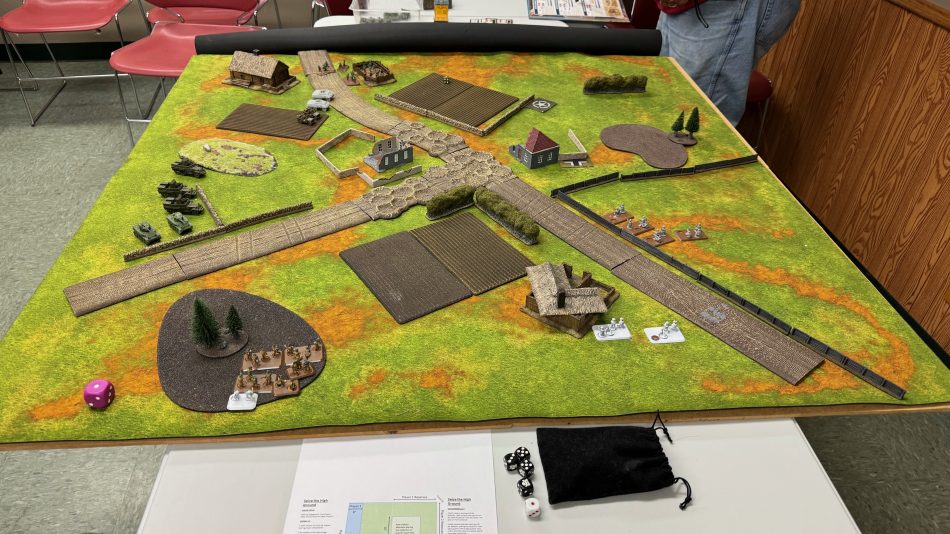
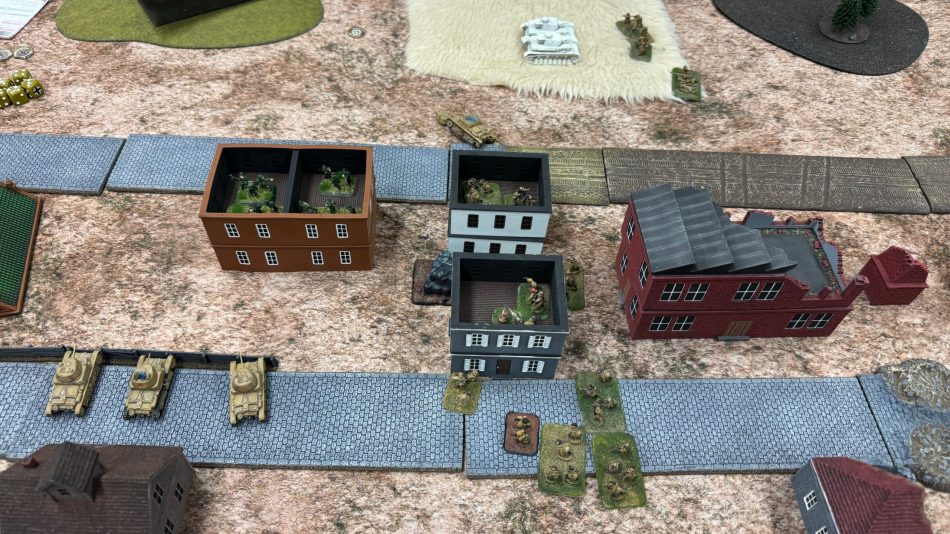
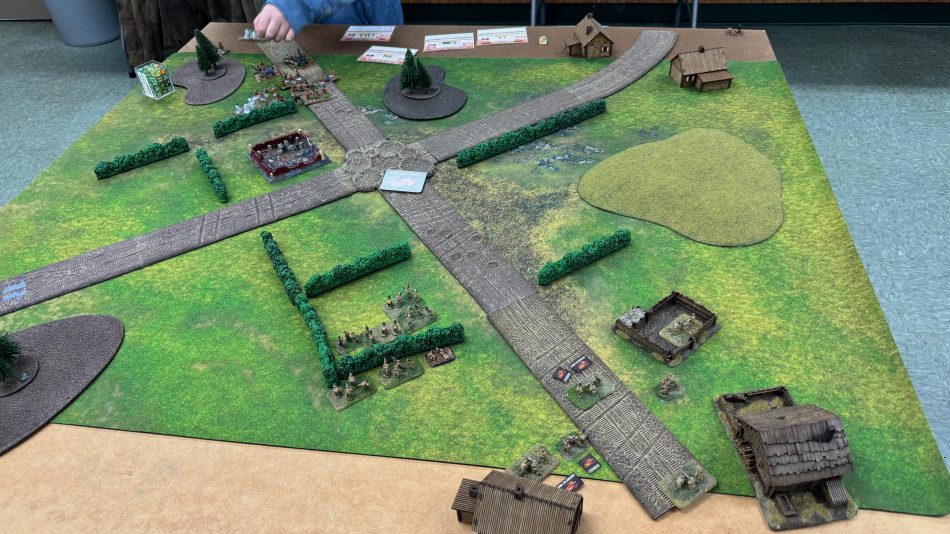
TY already has a quick missions pdf , https://www.team-yankee.com/Portals/0/Documents/TeamYankee/QuickMissions.pdf
Thanks for the review and share of the format.
I would recommend allowing Spearheads that are only affected by objectives already placed on the table. It was actually designed so that the other objectives were placed after deployment specifically so you could Spearhead more effectively. Although it might let a person place their objective in such a way that their Spearhead is very effective the other person will still have around 6 rounds to fight for that objective. It really is no different than having an Attack / Defend situation in other missions…but further up the field.
Why do you make both black boxes mandatory?
We have been playing half field (3″x2″) tournaments with 40-50p successfully with only one black box to leave a little choice
i think one reason why you have found the “who is attacking” die roll so important is there is no compensating disadvantage to attacking.
Eg in move to contact is basically symmetrical (deploymentzones, reserves and objectives) however…
The attacking player picks the edge (Advantage to attacker) then the alternating deployment starts with defender (Advantage to attacker) . The “who has first turn” in normal TY missions compensates for this ( or minefields ) but here its random (neither player Advantage).
I would suggest swapping who starts the alternating deployment. Choosing the edge is usually the biggest Advantage in my opinion.
Just my 2 pence . Would be interested if others agree or not.